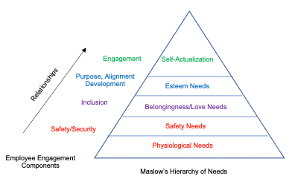5 Ways to Increase Remote Worker Engagement

By Jay Forte, guest contributor
It might seem hard to believe now, but just a few short months ago, one of the biggest challenges organizations faced was keeping its employees engaged. In fact, the Gallup Organization reported in its The State of the American Workplace report that the percentage of engaged employees hovered around only 30% of the workforce for most of the past 20 years.
Let’s put that into perspective: only 30% of employees were engaged in their work. They brought their A-game to work and were connected to making a difference. That means approximately 70% of the workforce did just enough to not get fired, or did even less.
Pre-COVID-19, we struggled to get employees to perform at their potential. Now, how and where we work has changed. Think of the previous challenges of engaging a workforce when they were on-site with each other. Organizations today are facing new challenges to engage their employees, and it all revolves around Self-Actualization, or the ability for a person to realize their potential. To better understand this, we need to understand Maslow’s Hierarchy of Needs.
Abraham Maslow, an American psychologist, explained that for people to achieve Self-Actualization, they need to address and advance past the four lower needs levels within the Hierarchy of Needs. If any of the four lower levels are unaddressed, people will be unable to focus their attention and effort on anything else until the lowest unaddressed level has been met.
There is a direct correlation between Maslow’s Hierarchy of Needs and how to engage employees in today’s workplace. Think about everything happening in the world today. Employees are not engaged and thinking about high performance (Self-Actualization) if they are worried about foreclosures or evictions, access to food, having the proper cleaning supplies, having and using the right safety equipment, feeling safe in and out of the workplace, feeling disconnected from their teams and friends and struggling to feel successful working from home.
Any of these experiences can stop a previously engaged employee from bringing A-level energy to their work as these unmet needs become the employee’s constant distraction. Now imagine what it does to an employee who may be experiencing two or more of these at the same time.
To help employees address and solve these needs, managers need to be more aware of their employees than ever before. Greater awareness is best achieved through stronger and more personal relationships, an approach that is reinforced in the current perspective that today’s managers should be trained to think and act as workplace coaches
Coaches focus on building and sustaining more personal, productive and intentional relationships, which are key to understanding where employees are (i.e. their needs, challenges, and obstacles). This, in turn, provides the information organizations need to develop and deliver an effective 5-area engagement response that addresses the levels of Maslow’s Hierarchy: Safety/Security, Inclusion, Purpose, Alignment, and Development (see figure 1).

What does this look like? Where can you start? Here are a few ideas.
Safety/Security
Create a list of resources to help employees navigate challenges they may be facing, whether it’s where to find food or cleaning supplies, or how to manage rent or mortgage payments to stop evictions or foreclosures. Create a webpage with responses to Frequently Asked Questions or sources with accurate information. If employees are worried or anxious about their safety returning to work or having loved ones back in the workplace, they are distracted from performance. Similarly, if employees are unsure if they will have a job to return to at all, they will be distracted and worried. Know where your employees are and what they need to feel safe and secure, then provide it.
Inclusion
To be engaged, employees need to feel they are a valuable part of their team. This was much easier to accomplish when everyone was on-site, but now, managers must build a sense of team, camaraderie, and inclusion using remote tools, such as Zoom, Facetime, Slack, Facebook groups, and other applications that connect remote employees personally and emotionally. Employees may also find value from wellbeing offerings, such as meditation or mindfulness classes, even if those were not part of their team bonding before. This requires a different mindset and accurate information about what helps employees feel included. What is needed hasn’t changed. How to create it requires new ideas and a plan. Know what helps each employee feel included and build it into your response.
Purpose
At a time when employees are confused and anxious about the world around them, clearly identifying with a strong daily purpose helps employees feel needed, important, and successful. Purpose has power both personally and professionally. Having a reason to get up each morning, contribute and make a difference is even more important in times that feel heavy, overwhelming, and anxious. When employees know the purpose of the organization and their purpose in it, it amplifies their sense self-esteem and confidence. Regularly highlight the purpose of the organization and each employee’s role (and importance) in delivering it.
Alignment
As more employees work without the previous level of direct supervision, it is critical to ensure that employees are in roles that align to their talents, strengths, interests, and skills. Employees must feel capable and competent to build their esteem. Ensure your organization has an effective process to hire and promote employees that uses a Performance Profile to define the role and its success attributes, and a “prove it to me” type of interview to ensure those considered for the role can successfully complete the requirements of the role. Alignment inspires confidence. Know your employees’ abilities and ensure they are aligned to roles that need what they do and like best.
Development
Create an intentional skill development plan. Not only does this engage employees in their work, but also ensures their ability to achieve the performance expectations of their role. The result is they feel more capable, valuable, and important, all components of self-esteem. Though development has always been a driver of engagement, the pace of change in today’s workplace makes it more critical. Know which skills are important in the workplace and provide learning opportunities for all employees. Know what each employee needs for both skill and career development to have meaningful conversations and wisely guide their performance and success.
How and where we work have changed, but the need to be actively engaged in our work has not. It is important to note that to activate the 5 engagement areas requires strong, personal, and supportive coaching relationships between managers and employees. If a poor relationship exists, managers will not be able to gather enough of the right information to be able to wisely understand and guide employees to resolve their issues and focus on performance. And in this moment, outside issues are distracting your employees and complicating their performance. Know what they need and help them respond. In return, they will shift their energy from anxiety and worry to performance. The result? Everyone is better.
Jay Forte is President and Founder of The Forte Factor and Certified Executive Coach. Dedicated to sharing practical approaches to hiring, engaging, managing, developing and leveraging talent, he helps organizations build high-performing teams through his coaching, educating and consulting. He is the author of Fire Up Your Employees and Smoke Your Competition, and The Greatness Zone – Know Yourself, Find Your Fit, Transform the World. You can learn more at www.thefortefactor.com.

0 comments
Leave a comment